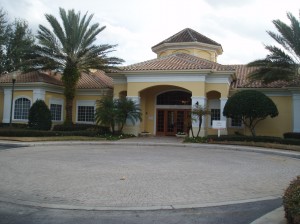 One of the most common reserve study questions that often comes up is which method of calculating reserves is better: the pooled (cash flow) method or the component method? Before we really examine this question, it is important to know a little background information on each method.
One of the most common reserve study questions that often comes up is which method of calculating reserves is better: the pooled (cash flow) method or the component method? Before we really examine this question, it is important to know a little background information on each method.
Overview of Methods
The pooled (cash flow) method takes all reserve items in an association and puts them into one general use account and pays for variable expenses when they occur. Meanwhile, the pooled method also takes into account interest on the money being put in the reserve account, taxes owed on the interest being gained, and inflation on all items, so their future cost can be forecasted. Reserve analysts then use a computer algorithm to determine the monthly or yearly funding for the association.
The component method treats every reserve item in the association like its own reserve account. More importantly, it dictates that money reserved for one item cannot be transferred over to a different item without an association vote.
Examples
Let’s look more closely at an example of what this means using the following numbers:
| Remaining Useful Life | Useful Life | Replacement Cost | Reserve Funds | |
| Roofing | 8 | 20 | $100,000 | $40,000 |
| Painting | 2 | 6 | $50,000 | $30,000 |
The amount needed to fund Roofing is ($100,000-$40,000)/8 years = $7,500 per year.
The amount needed to fund Painting is ($50,000-$30,000)/2 years = $10,000 per year.
Since these are the only two items being funded, the component method projects funding for the next year of $17,500.
Let’s revisit the roofing and painting example with a different set of numbers:
| Remaining Useful Life | Useful Life | Replacement Cost | Reserve Funds | |
| Roofing | 8 | 20 | $100,000 | $40,000 |
| Painting | 0 | 6 | $50,000 | $30,000 |
In this hypothetical example, the association does not have enough money to paint their buildings, even though they are due to be painted. Using the component Method, even though the association has $70,000 in total reserve funds and the painting project will only cost $50,000, they cannot paint the buildings since they only have $30,000 in the painting account. At this point, their options are to either delay painting until they have enough money to fund the painting costs or issue a special assessment to members to make up for the deficit. As you can see, the component method is very rigid and inflexible.
However, if the pooled method of reserves is employed, then you can simply take your total balance of $70,000 and subtract the $50,000 painting costs and have a balance of $20,000. At this point, you would have 8 years to fund the next cycle of roofing and 6 years to fund the next cycle of painting. The pooled method leads to much more flexibility within an association’s reserve funds.
Other Differences
Other advantages of the pooled method are it makes reserve contributions fairly level over time. Also, the pooled method will keep reserve contributions at minimum levels over long periods of time and it generally results in lower fees than the component method. Statistically, the pooled method has a very minimal possibility of having inadequate funds when needed, whereas with the component method, it is much more likely. When it comes to choosing a funding method, the pooled (cash flow) method is the best choice you can make for your association.